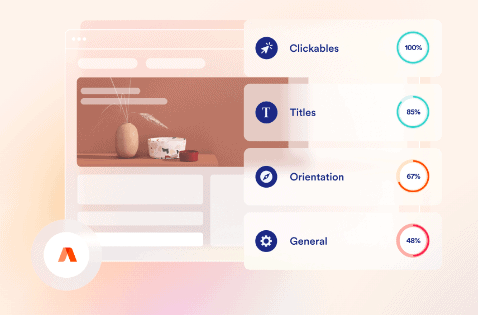The Importance Of Conducting Regular Accessibility Checks On Your Website

According to WebAim’s 2022 accessibility report, which analyzes the world’s top one million home pages, 96.8% had detectable web accessibility failures. The report also found that the average web page had 21.1 detectable issues, a slight increase from the previous year. When you consider that there are 4.9 billion internet users worldwide, and 1 billion of them have some form of disability, it’s clear to see that more needs to be done to improve digital accessibility.
However, people are very unlikely to fix something unless they are aware that it’s broken. This is why it’s vitally important that website owners understand the importance of conducting regular accessibility checks to identify and fix any issues preventing users with disabilities from accessing their content.
Understanding web accessibility and how it’s assessed
Web accessibility is the degree to which a website can be used by people with disabilities. Many types of disabilities can affect a person’s ability to use a website, including visual, auditory, physical, speech, cognitive, and neurological disabilities.
The WCAG 2.1 guidelines, which are the international standards for web accessibility, define three levels of conformance: A, AA, and AAA. Level A is the minimum level of conformance, and level AAA is the highest. To be compliant at level A, a website must meet all the WCAG 2.1 success criteria at that level. Level AA compliance requires meeting all the level A and level AA success criteria and so on.
Furthermore, the WCAG 2.1 success criteria are organized into four principle categories: perceivable, operable, understandable, and robust. Each of these categories contains a number of subcategories, which contain one or more success criteria.
How to check the accessibility of your website
The easiest way to check your web accessibility is to use an automated tool, such as the accessScan accessibility scanner. This tool will run a full diagnostic scan of your website in a matter of minutes before giving you a full breakdown of your site’s performance across 11 separate categories, including navigation, content, and multimedia. Armed with this report, you can then start to address any areas where your site is falling short and make the necessary changes to improve its accessibility.
At the end of the audit, accessScan will give you a list of recommended changes, which you can then implement one by one. Alternatively, if you’re short on time or don’t have the necessary expertise, you can always hire an accessibility consultant to help you fix the issues identified in the report.
If you prefer to go the manual route, there are a number of different accessibility checks you can perform yourself. These include checking your site’s navigation, making sure your pages can be viewed without stylesheets, testing your forms, and ensuring your content can be read by screen readers. While manual accessibility testing can be time-consuming, it’s a good way to better understand how people with disabilities experience your website.
Why web accessibility is so important for businesses
Firstly, it’s a legal requirement in many countries. Organizations that fail to make their websites accessible can be fined or sued. For example, in the United States, the Department of Justice can take action against organizations that violate the Americans with Disabilities Act (ADA). According to the Bureau of Internet Accessibility, the average cost of a web accessibility lawsuit is $25,000 – once you factor in settlement costs, lawyer fees, and remediation expenses.
Secondly, accessible websites tend to be of higher quality overall. This is because the same guidelines that make a site accessible also make it more user-friendly, including clear and concise content, easy navigation, and consistent design. These factors not only make it easier for people with disabilities to use your site but also for everyone else.
Interestingly, improving web accessibility also goes hand in hand with SEO optimization. Google’s algorithms are constantly evolving, and the company has stated that they consider a site’s accessibility when ranking it in search results. This means that as well as being the right thing to do, making your site more accessible can also give you a boost in the SERPs, which should drive more traffic to your site, and, hopefully, boost revenue.
Finally, making your website accessible can dramatically expand your potential customer base. Over 1 billion people worldwide have some form of disability, many of whom rely on accessible websites to browse the internet and make purchase decisions. In the United States alone, it’s estimated that disabled people have a combined disposable income of over $490 billion which is certainly nothing to be scoffed at.
Conclusion
Accessibility should be a key consideration for any website owner or developer. By ensuring that your site is accessible to as many people as possible, you’ll not only be able to reach a wider audience, but you’ll also be doing your part to create a more inclusive internet for everyone.
And while there is no magic bullet for making a website accessible, you can take several steps to improve its accessibility. These include conducting regular accessibility audits, using automated testing tools, and following web accessibility guidelines. With a little effort, you can make your site more accessible and, in turn, improve its overall quality for all of your users.





